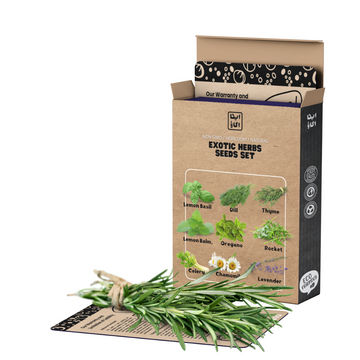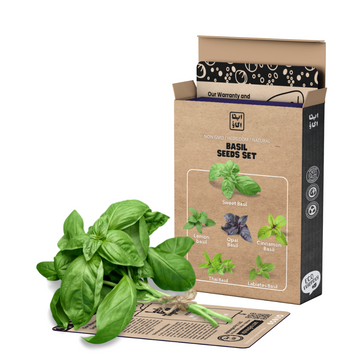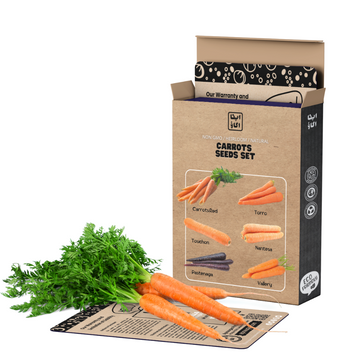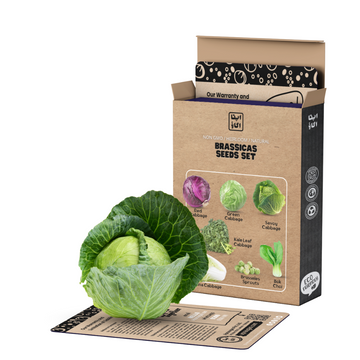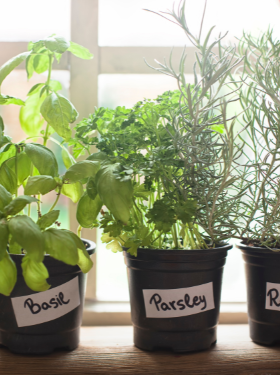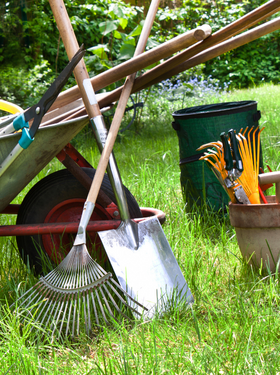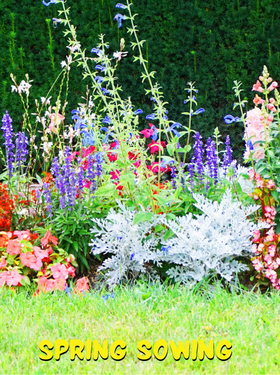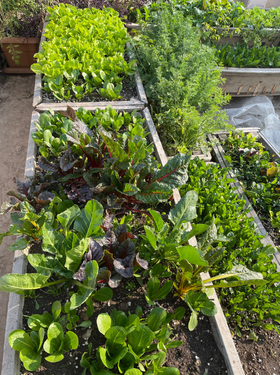When growing herbs in containers, some precautions are necessary. They need a good drainage system and good sun exposure to grow successfully. Other considerations include the size of the container and the amount of sun exposure. The following is a guide to growing herbs in containers. Whether growing your herbs in containers for potpourri, medicinal purposes, or in your kitchen garden, these tips will help you get started. Read on to find out more.
Good drainage
Herbs do well in containers and can be grown in various sizes. You'll need to choose a pot that's one-third or slightly larger than the desired final height of the herb. Herbs with shallow roots can grow in smaller containers, but taller plants should be planted in larger pots. Be sure to choose a container with a good drainage hole, as herbs do not tolerate wet soil well.
When growing herbs in containers, you should avoid using garden soil, as it tends to compact in pots and reduces drainage. Instead, use potting soil, which has a more porous composition, and add worm castings to improve moisture retention and soil nutrients. Once your herbs have settled, you can cover the bottom of the pot with gravel, pebbles, or shells. You can also use purpose-made pot feet to support them.
While most herbs require full sun for at least six to eight hours a day, they can survive in cooler temperatures as long as the soil is well-drained. Containers can bake if they get too hot, so ensure your herbs get enough shade to prevent the bottoms from becoming too dry. Don't overwater the herbs - some of them thrive on neglect and can even grow wild if they're not given enough water.
Good sun exposure
Herbs need a balanced humid environment and good air circulation. Containers should be spaced a few inches apart so that air can circulate freely between them. Moist pebbles, misting water, and opening windows will also help. Check your plants for any pest or insect damage signs and provide additional humidity to the container. Well-drained soil is important for herbs, and too wet containers may cause root rot.
Before you plant your herbs in a container, you should determine their optimal growing conditions. If the herb is tolerant of wet soil, a plastic pot might be the best choice. If the herb prefers dry soil, you should plant it in a clay pot. Herbs that prefer moist soil should be planted in a slightly larger pot than the plant itself. Choose a container that has drainage holes for excess water to drain away from the container. A shallow pot is best for herbs with a small root system, while a deep pot is best for plants with long taproots.
Herbs grown in a container can also serve as decorative elements in the container garden. They add scent and texture to the container and can be used as a low hedge or background. However, be sure to consider their size before planting. A 4-inch pot doesn't represent their final size, so consider that before planting. While choosing an herb, cross-reference the list to choose the one that will do best in your garden's shady spots.
Planting time
Herbs in containers require a deeper root run and must be planted at the right depth. For this, 'long tom' pots with the correct depth are recommended. Certain herbs such as mint or French tarragon will die back during winter, but most will look after themselves if planted in a suitable location, such as a sheltered area, a cold frame, or an open-fronted shed. In heavy rainfall, you can protect the plants by covering the containers with plywood or a sheet of glass. In cold weather, you can cover the containers with bubble polythene to prevent them from freezing.
Most herbs have short life cycles, such as parsley and cilantro. They bloom, set seeds, and die within 45 days. Other herbs, such as thyme, mint, and oregano, can last for years. You can fertilize them to encourage growth and flowering. Mint requires minimal fertilizer. These plants can be grown year-round indoors with a little extra effort.
Herb seeds need ample light to germinate. A DIY seed-starting rack with grow lights is ideal for indoor seedlings. Make sure to fill the container to about half full with seed starting mix. This way, there is less chance of pathogens. Once the seedlings have sprouted, you can water them and prune them. Keep in mind that herbs will grow faster if they're watered regularly.
Size of container
The size of the container used for growing herbs depends on the type and characteristics of the herb you're growing. Herbs that prefer moist soil should be planted in plastic containers, while drier plants can grow in terra cotta pots. When choosing a container, choose one slightly bigger than the herb itself. Look for one with drainage holes so excess water can be drained away. Shallow containers work well for herbs with short root systems, while deep pots are suitable for herbs with long taproots.
A good choice for pots is one with 12 to 18 inches. This is sufficient for multiple herbs. Larger pots are also suitable for large herbs like lemongrass. Some herbs like parsley and thyme need more room to grow, while mint and other herb plants need a larger pot. However, it would help if you remembered that larger pots could be heavy once full of potting soil. Hence, it may be difficult to move indoors during cold weather.
Herbs are often grown in containers to add color and aroma to the garden. Choose herbs that need similar growing conditions, so don't clog up your container. For example, plant herbs with similar watering need together, such as chives, dill, and oregano. A smaller pot will also prevent the mint from spreading into nearby herbs. In addition, herbs like marjoram and thyme need supplemental lighting to grow properly.
Types of herbs to grow in containers
Herbs that grow well in containers are often useful culinary herbs. These varieties require well-drained soil and should be planted in fresh containers in spring or fall. Start them from seeds indoors in early spring to give them the best chance of success. If they are too small, they may be transplanted to larger containers later. For the best results, use a well-drained potting mix.
Herbs that do well in containers include basil, cilantro, parsley, dill, mint, thyme, and rosemary. Some herbs like moist soil, while others prefer a drier soil. The most appropriate container will be slightly larger than the herb. The container should also have drainage holes to channel excess water out of the potting soil. Herbs with shallow roots are best grown in small containers, while long taproots and roots require larger pots.
Herbs grown in containers need at least six to eight hours of sunlight. While most herbs prefer full sunlight, they can also tolerate partial shade. To keep the soil fertile, fertilize regularly. Use organic fertilizer to feed your plants. Sprouts, worm castings, or a slow-release organic product can be applied to the potting mix at planting time. If you are growing herbs indoors, make sure you get plenty of indirect sunlight for your plants.
Care of potted plants
When it comes to potted herbs, a simple but important rule is that they like to have a little water. However, this can vary from herb to herb. Mediterranean herbs have lower water needs than their more drought-tolerant counterparts, and they do best with moist soil. Likewise, herbs with a higher water requirement, like sage and lavender, need more water. Depending on the variety, watering the plant may vary depending on its needs.
Among the many different types of herbs, rosemary is the most popular. This woody perennial herb needs a sunny location and well-drained soil to thrive. Herbs in pots should be spaced apart enough to allow adequate air circulation. The spacing between potted herbs should be sufficient for proper growth and space plants according to their mature size. For example, dwarf basil can be placed closer together than rosemary. However, if you are not sure of your ability to space potted herbs, you can use small fans to simulate wind conditions outdoors.
While most herb plants stay small and compact, there are some exceptions. For instance, tree-form hibiscus thrives in full sunlight. Sweet basil and dwarf purple basils fill the top pot, while thyme grows along the sides. For optimum results, potted herbs should be given regular watering. Rotate the pot regularly to keep air circulation even if you have time. Also, turn individual plants now and then to make sure they're evenly growing around the pot.


